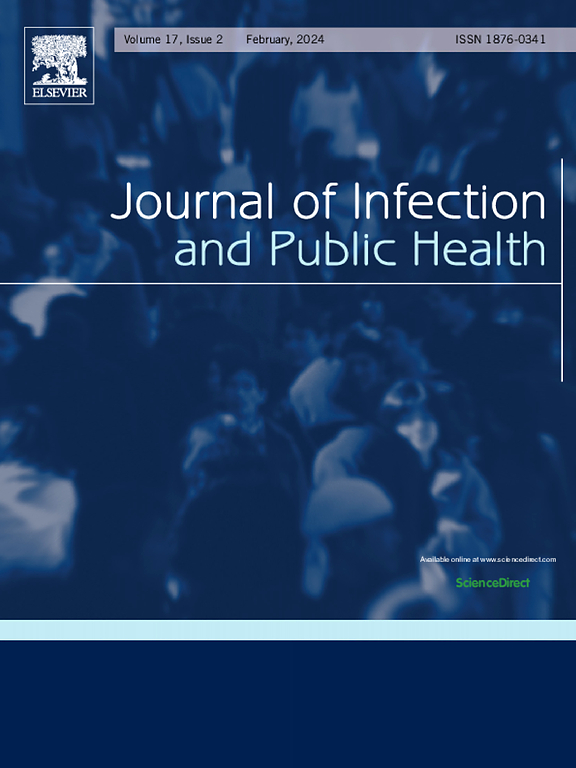Uncovering the unseen: Metagenomic next-generation sequencing improves liver abscess diagnostics
IF 4.7
3区 医学
Q1 INFECTIOUS DISEASES
引用次数: 0
Abstract
Background
This study retrospectively analyzed the metagenomic next-generation sequencing (mNGS) results and clinical data from patients with liver abscess (LA) to investigate the clinical value of mNGS in the diagnosis of LA.
Methods
This retrospective observational study included patients with LA who were admitted to Peking Union Medical College Hospital (PUMCH) between April 2022 and July 2024. We comprehensively analyzed the final clinical etiological diagnosis, traditional pathogen detection through conventional microbiological testing (CMT), and mNGS results in terms of pathogen type and specimen turnaround time.
Results
Among 60 patients with LA, 19 types of pathogens were identified. Using clinical etiological diagnosis as the standard, mNGS identified all pathogens, whereas CMT identified only 42.11 % of pathogens. The true-positivity rate of mNGS (86.67 %) was significantly higher than that of CMT (58.33 %; P < 0.001). The average specimen turnaround time for mNGS (57.66 h) was shorter than that for CMT (86.54 hours, P < 0.001).
Conclusions
Compared with existing CMT, mNGS offers higher true-positive rates, broader pathogen coverage, and shorter specimen turnaround time. These advantages contribute to more accurate clinical diagnosis and treatment.
揭示看不见的:宏基因组新一代测序改善肝脓肿诊断
本研究回顾性分析肝脓肿(LA)患者的新一代宏基因组测序(mNGS)结果和临床资料,探讨mNGS在肝脓肿诊断中的临床价值。方法回顾性观察研究纳入2022年4月至2024年7月在北京协和医院(PUMCH)住院的LA患者。我们综合分析了最终的临床病原学诊断、常规微生物检测(CMT)的传统病原体检测以及mNGS结果的病原体类型和标本周转时间。结果60例LA患者中检出病原菌19种。以临床病原学诊断为标准,mNGS鉴定出所有病原体,而CMT仅鉴定出42.11% %的病原体。mNGS的真阳性率(86.67 %)显著高于CMT(58.33 %);P & lt; 0.001)。mNGS的平均标本周转时间(57.66 h)短于CMT(86.54 h, P <; 0.001)。结论与现有的CMT相比,mNGS具有更高的真阳性率、更广的病原体覆盖率和更短的标本周转时间。这些优点有助于更准确的临床诊断和治疗。
本文章由计算机程序翻译,如有差异,请以英文原文为准。
求助全文
约1分钟内获得全文
求助全文
来源期刊

Journal of Infection and Public Health
PUBLIC, ENVIRONMENTAL & OCCUPATIONAL HEALTH -INFECTIOUS DISEASES
CiteScore
13.10
自引率
1.50%
发文量
203
审稿时长
96 days
期刊介绍:
The Journal of Infection and Public Health, first official journal of the Saudi Arabian Ministry of National Guard Health Affairs, King Saud Bin Abdulaziz University for Health Sciences and the Saudi Association for Public Health, aims to be the foremost scientific, peer-reviewed journal encompassing infection prevention and control, microbiology, infectious diseases, public health and the application of healthcare epidemiology to the evaluation of health outcomes. The point of view of the journal is that infection and public health are closely intertwined and that advances in one area will have positive consequences on the other.
The journal will be useful to all health professionals who are partners in the management of patients with communicable diseases, keeping them up to date. The journal is proud to have an international and diverse editorial board that will assist and facilitate the publication of articles that reflect a global view on infection control and public health, as well as emphasizing our focus on supporting the needs of public health practitioners.
It is our aim to improve healthcare by reducing risk of infection and related adverse outcomes by critical review, selection, and dissemination of new and relevant information in the field of infection control, public health and infectious diseases in all healthcare settings and the community.
 求助内容:
求助内容: 应助结果提醒方式:
应助结果提醒方式:


